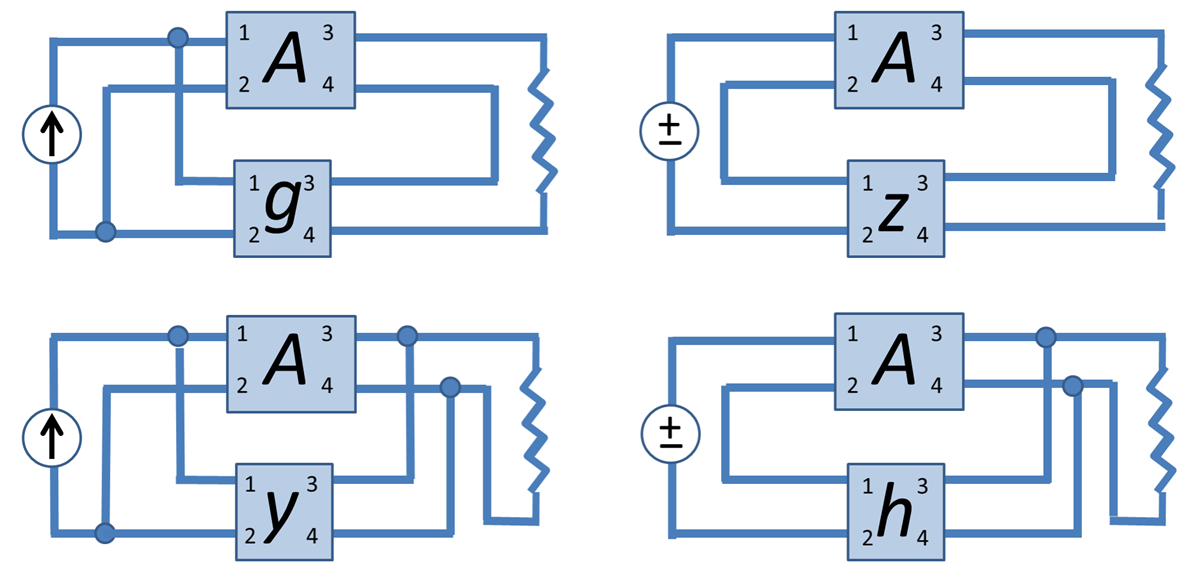I'm taking an electrical engineering course and we are covering the effect of feedback on the bahaviour of amplifiers. I learnt the 4 basic topologies, and how with each configuration the feedback circuit can be replaced with a two-port network. It's summarised in this image I found on Wikipedia:

However, I can never figure out quite why these models are chosen. With the series-shunt connection on the bottom-right, for instance, my lecturer explained that the choice of hybrid parameters was because "the input is part of a series network and the output is part of a parallel network". Another source says something along the lines of "the feedback network and the main amplifier share the output voltage and input current".
Could you please try to get me to appreciate the choice of h, g, y and z parameters intuitively? Is it purely out of convenience or will it simply not work in any other way?
